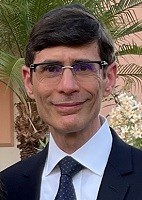Pongsthorn Chanplakorn, Mahidol University, Thailand
 Dr Pongsthorn Chanplakorn MD. graduated from Faculty of Medicine Siriraj hospital, then completed his residency training in the Department of Orthopaedic Ramathibodi hospital Mahidol University, Thailand. He finished his fellowship training in spinal surgery from Tohoku University Sendai, Japan. Dr Chanplakorn has special interest in the management of spinal metastasis and primary spinal tumours. He has published research in many fields in Orthopaedic surgery and developed new findings advancing the safety and effectiveness of clinical practice.
Dr Pongsthorn Chanplakorn MD. graduated from Faculty of Medicine Siriraj hospital, then completed his residency training in the Department of Orthopaedic Ramathibodi hospital Mahidol University, Thailand. He finished his fellowship training in spinal surgery from Tohoku University Sendai, Japan. Dr Chanplakorn has special interest in the management of spinal metastasis and primary spinal tumours. He has published research in many fields in Orthopaedic surgery and developed new findings advancing the safety and effectiveness of clinical practice.
Xing Du, First Affiliated Hospital of Chongqing Medical University, China
 Dr Xing Du is an Orthopaedic surgeon of the First Affiliated Hospital of Chongqing Medical University, Chongqing, China. He obtained his doctor's degree in Orthopaedics from Chongqing Medical University, and completed his orthopaedic surgery training at the First Affiliated Hospital of Chongqing Medical University. Dr Du' s clinical interest is in spinal surgery, particularly in the surgical treatment of spinal infection (tuberculosis) and spinal tumour. He acts as Editorial Board Member at BMC Musculoskeletal Disorders.
Dr Xing Du is an Orthopaedic surgeon of the First Affiliated Hospital of Chongqing Medical University, Chongqing, China. He obtained his doctor's degree in Orthopaedics from Chongqing Medical University, and completed his orthopaedic surgery training at the First Affiliated Hospital of Chongqing Medical University. Dr Du' s clinical interest is in spinal surgery, particularly in the surgical treatment of spinal infection (tuberculosis) and spinal tumour. He acts as Editorial Board Member at BMC Musculoskeletal Disorders.
John Houten, Maimonides Medical Center, United States

Dr Houten is a leader in advanced image-guided and minimally invasive techniques to more safely and accurately treat conditions needing spinal surgery. He graduated from the New York University School of Medicine with alpha omega alpha honours and completed a neurosurgery residency and spinal surgery fellowship at New York University Medical Center. He practises in New York City where he serves as Professor of Clinical Neurosurgery at the Zucker School of Medicine at Hofstra Northwell and Director of Spinal Neurosurgery and Neurotrauma at Maimonides Medical Center and has authored more than 50 pee-reviewed papers and serves on the Editorial Board of the journals World Neurosurgery and BMC Musculoskeletal Disorders. He lives in the Midwood section of Brooklyn with his wife, Dr Gila Weinstein, a plastic surgeon with whom he has collaborated on number publications describing specialised closure techniques for spinal surgery.
Koroush Kabir, Helios University Hospital Wuppertal, Germany
 Dr Kabir is medical director and chief consultant surgeon at the Center of Trauma Surgery, Orthopedics and Sports Medicine in Helios University Hospital Wuppertal and Associate Professor at University Bonn, Germany. He has a wide scope of surgical education with special clinical focus in spine and pelvic surgery, geriatric traumatology with special interest in periprosthetic fractures and polytrauma. His main clinical research interest is minimal invasive and computer navigated surgery of spine and pelvis. In his opinion, the new technology with different digital tools can help physicians to achieve patient specific outcome-improvement in the field of orthopaedics and trauma surgery.
Dr Kabir is medical director and chief consultant surgeon at the Center of Trauma Surgery, Orthopedics and Sports Medicine in Helios University Hospital Wuppertal and Associate Professor at University Bonn, Germany. He has a wide scope of surgical education with special clinical focus in spine and pelvic surgery, geriatric traumatology with special interest in periprosthetic fractures and polytrauma. His main clinical research interest is minimal invasive and computer navigated surgery of spine and pelvis. In his opinion, the new technology with different digital tools can help physicians to achieve patient specific outcome-improvement in the field of orthopaedics and trauma surgery.
Hyeun-Sung Kim, Gangnam Nanoori Hospital, South Korea

Dr Hyeun-Sung Kim is a Neurosurgery Specialist, and the Director of the Nanoori Hospital Gangnam. Dr Kim is a Section Editor of World Neurosurgery, Neurospine, IJSS, an Academic Editor of Medicine, and an Associate Editor of BMC Musculoskeletal Disorders. Dr Kim had served in the past as President of KOSESS (Korean Research Society of Endoscopic Spine Surgery), and is currently Faculty of World Spinal Column Society.
This Collections welcomed content which pioneered and utilized innovative techniques and technologies to diagnosis and manage degenerative spinal disorders.